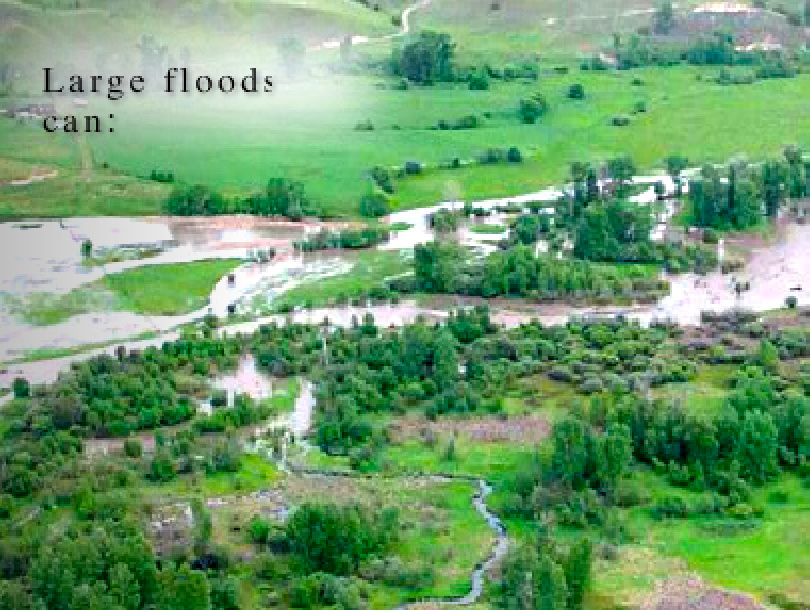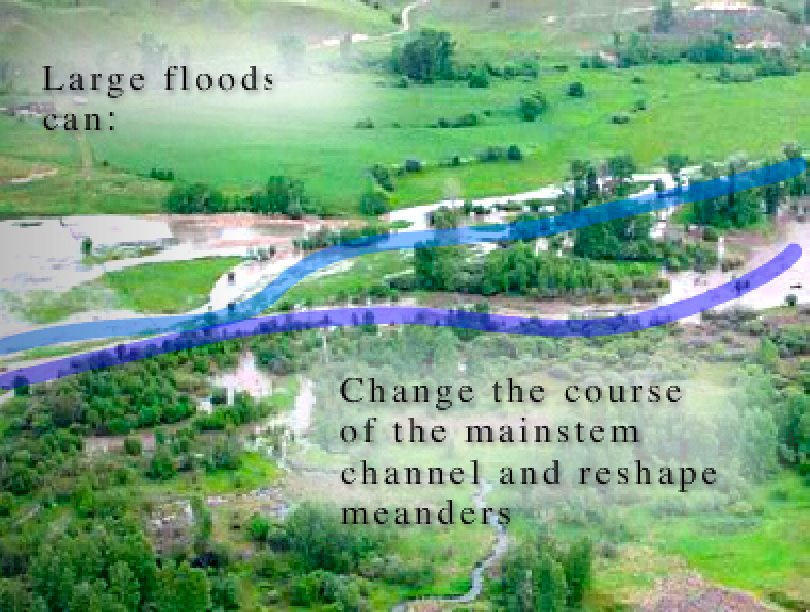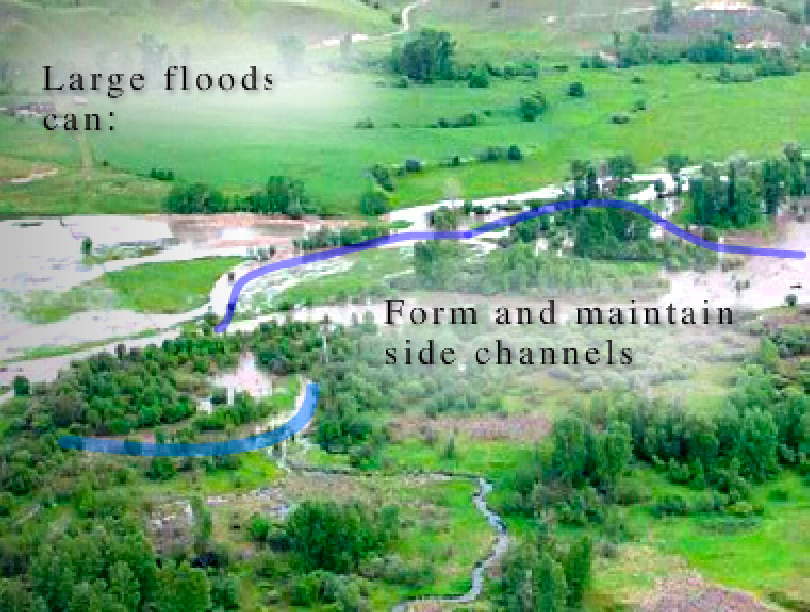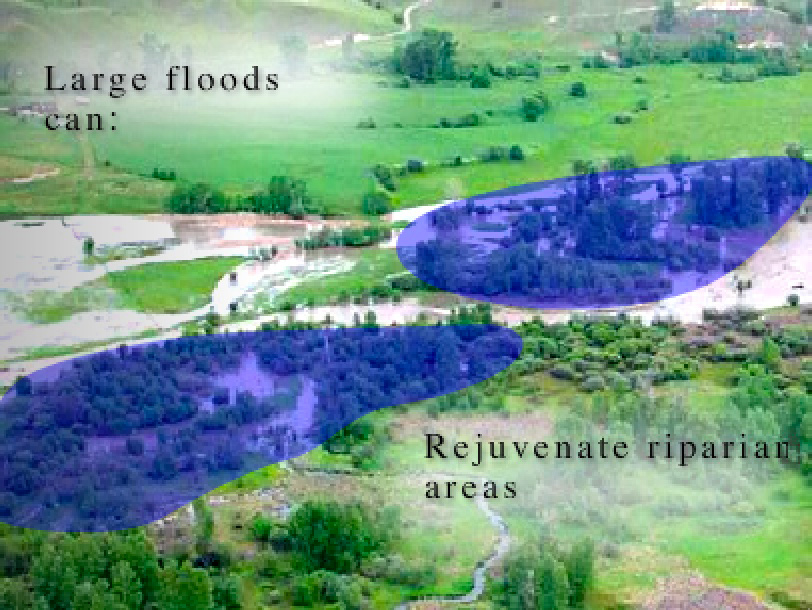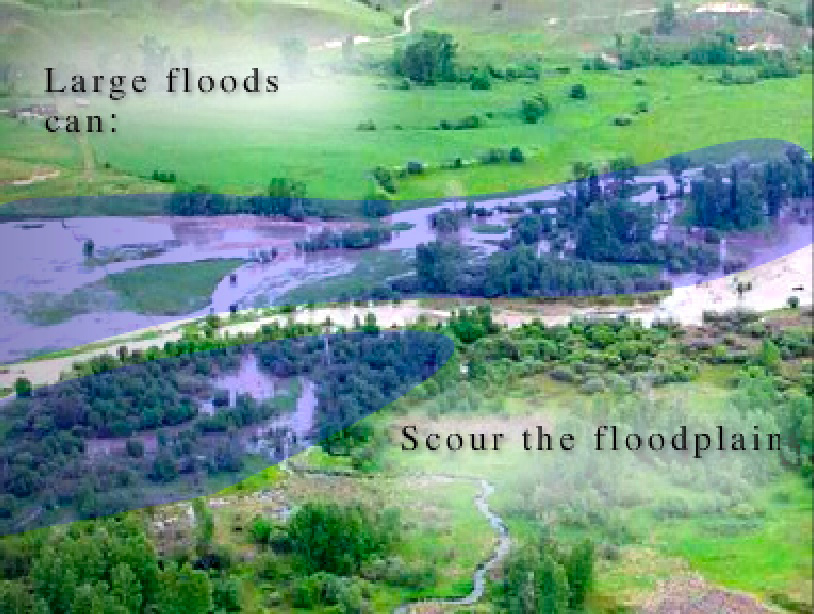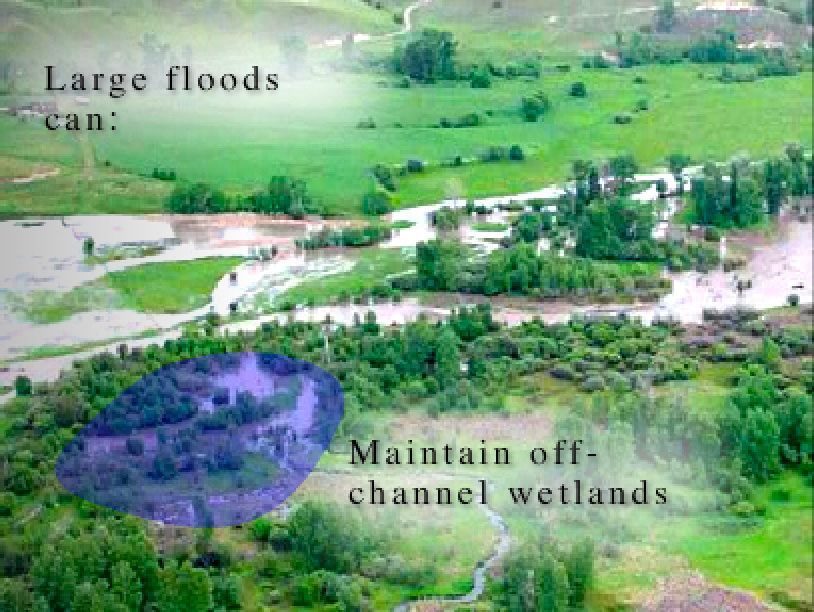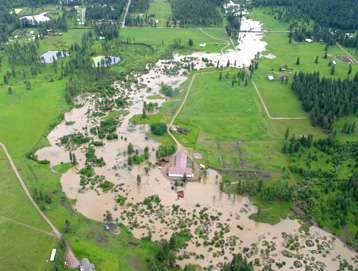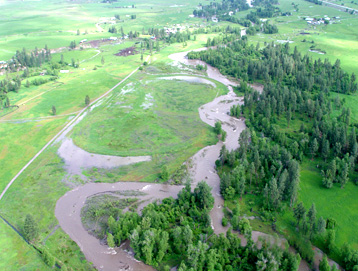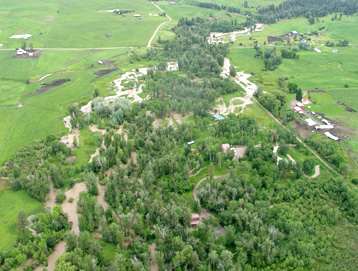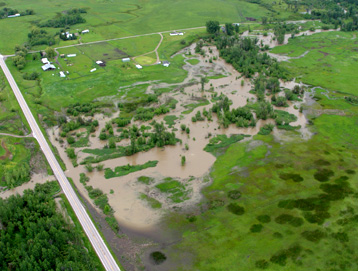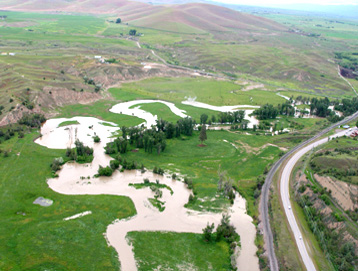Hydrology: Attributes of a Healthy Stream
An alluvial stream is one whose channel is composed of the sediments transported by the stream itself and that generally changes the shape of its bed as the rate of flow changes. (Adapted from Attributes of an alluvial river and their relation to water policy and management by Trash, McBain, and Leopold).
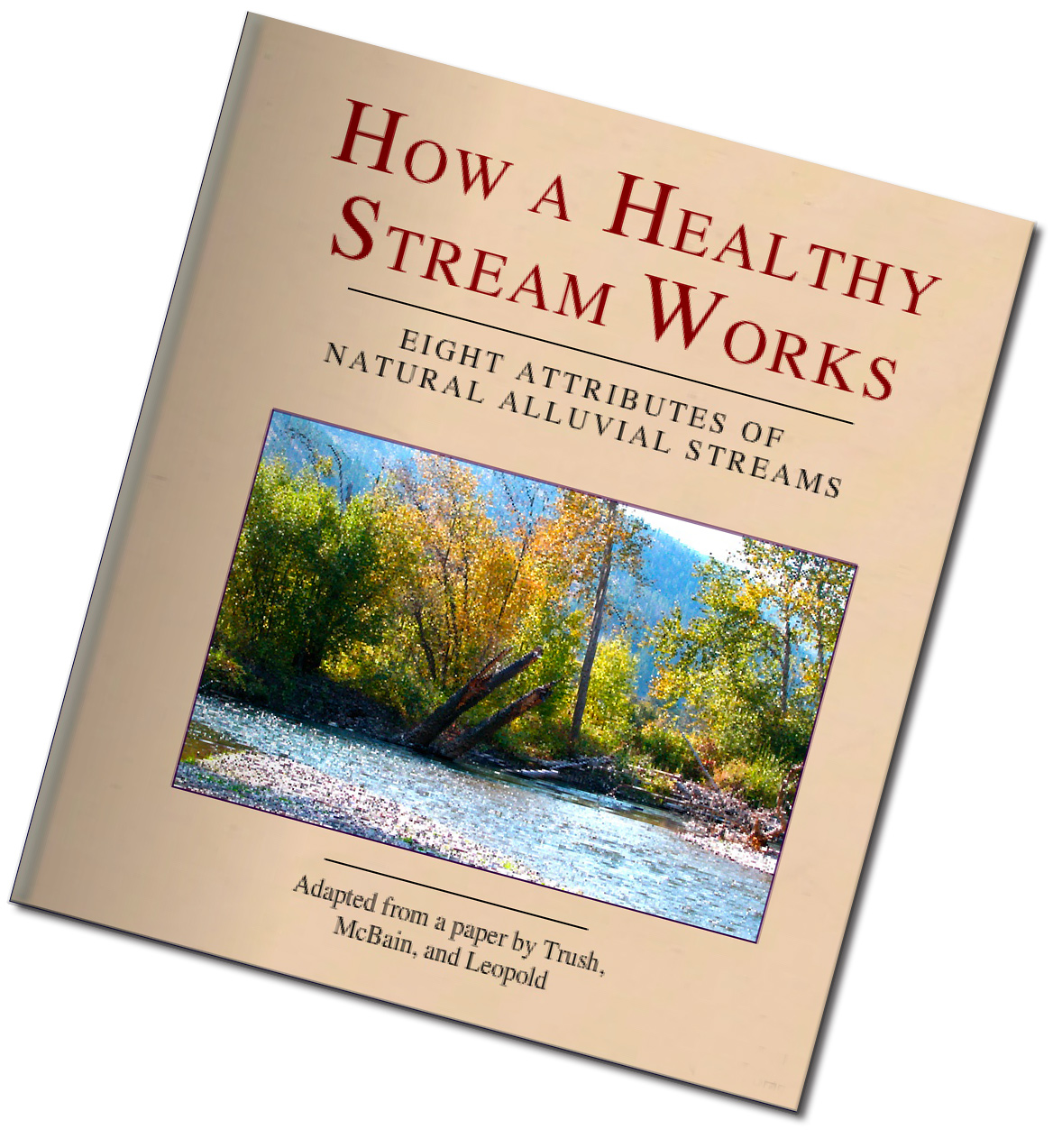
Attribute Seven: Large Floods Create a Complex Stream Environment
Large floods—those that occur at intervals of greater than 10 or 20 years—reshape and/or redirect meanders, move the main-stem channel, rejuvenate riparian stands, form and maintain side channels, scour floodplains, and maintain off-channel wetlands.
Floodplains are wetted almost every spring, but once every 10 to 20 years or so on average, flows are great enough to scour the floodplain. These infrequent large floods are critical for sustaining the complexity of the channel because they change the location and shape of the river on a large scale.
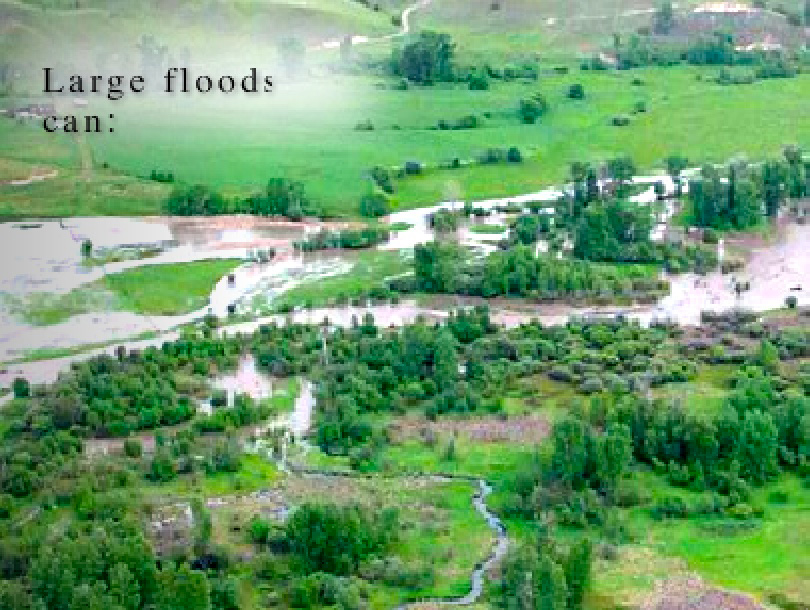
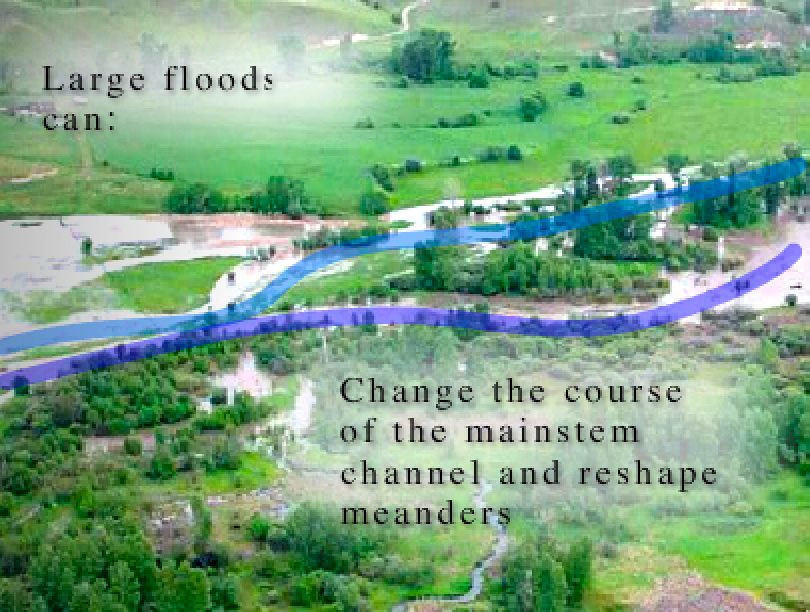
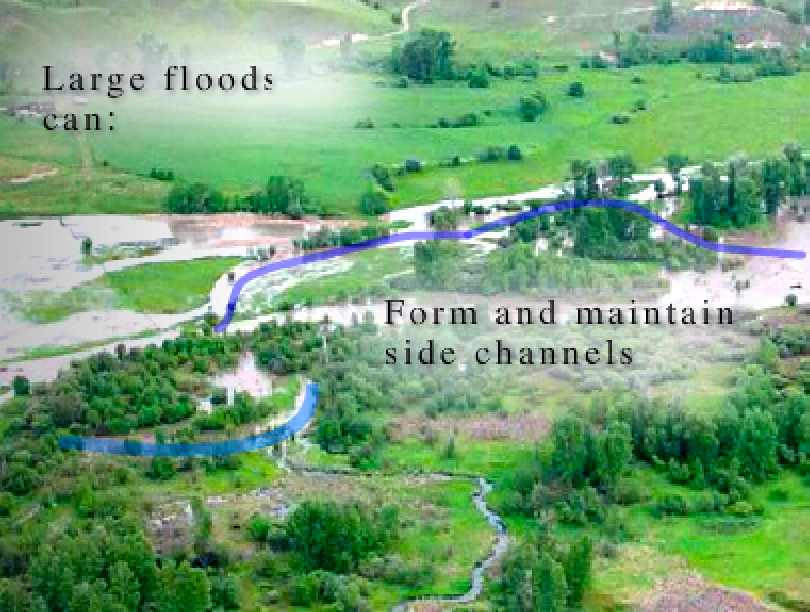



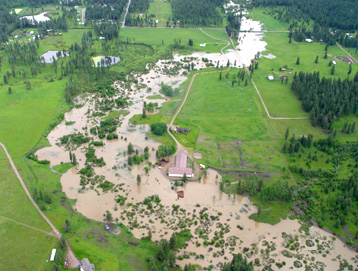
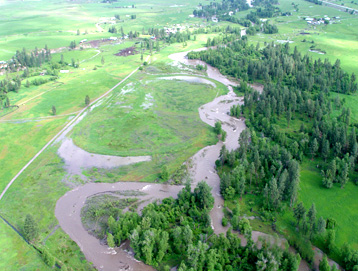


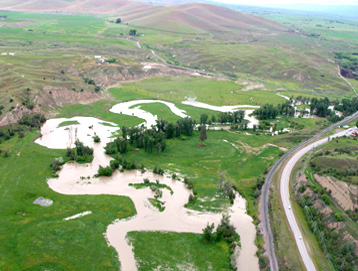
Hydrology: Attributes of a Healthy Stream
An alluvial stream is one whose channel is composed of the sediments transported by the stream itself and that generally changes the shape of its bed as the rate of flow changes. (Adapted from Attributes of an alluvial river and their relation to water policy and management by Trash, McBain, and Leopold).
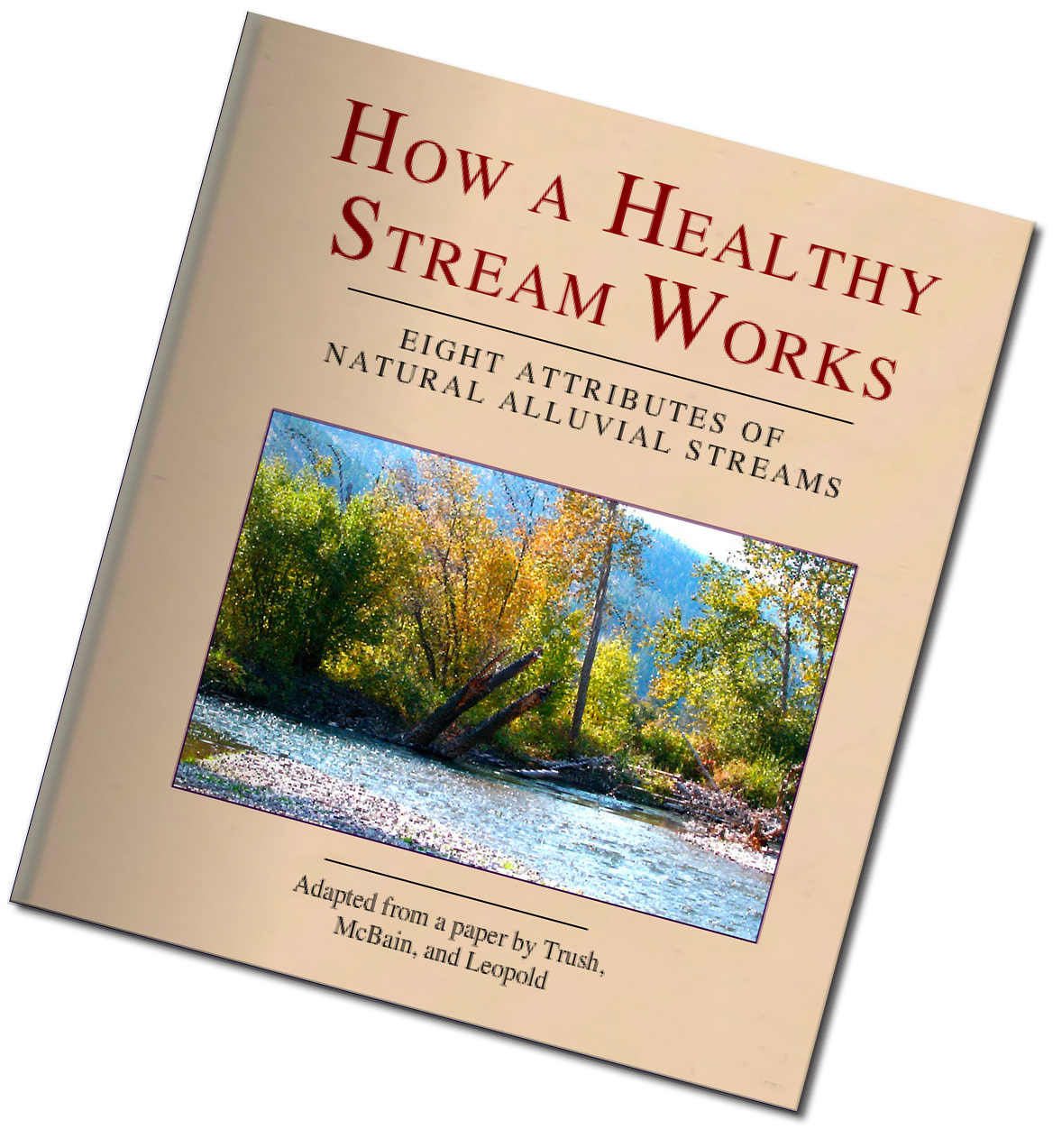
Attribute Seven: Large Floods Create a Complex Stream Environment
Large floods—those that occur at intervals of greater than 10 or 20 years—reshape and/or redirect meanders, move the main-stem channel, rejuvenate riparian stands, form and maintain side channels, scour floodplains, and maintain off-channel wetlands.
Floodplains are wetted almost every spring, but once every 10 to 20 years or so on average, flows are great enough to scour the floodplain. These infrequent large floods are critical for sustaining the complexity of the channel because they change the location and shape of the river on a large scale.
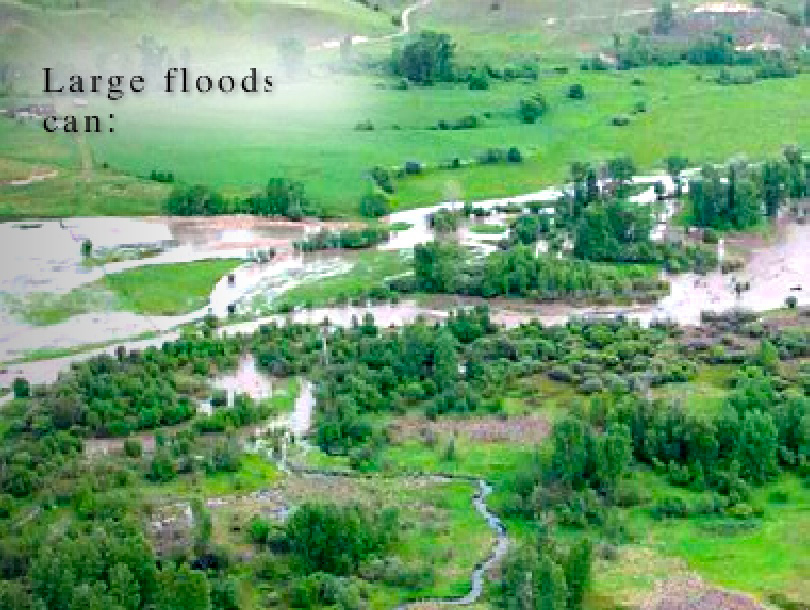

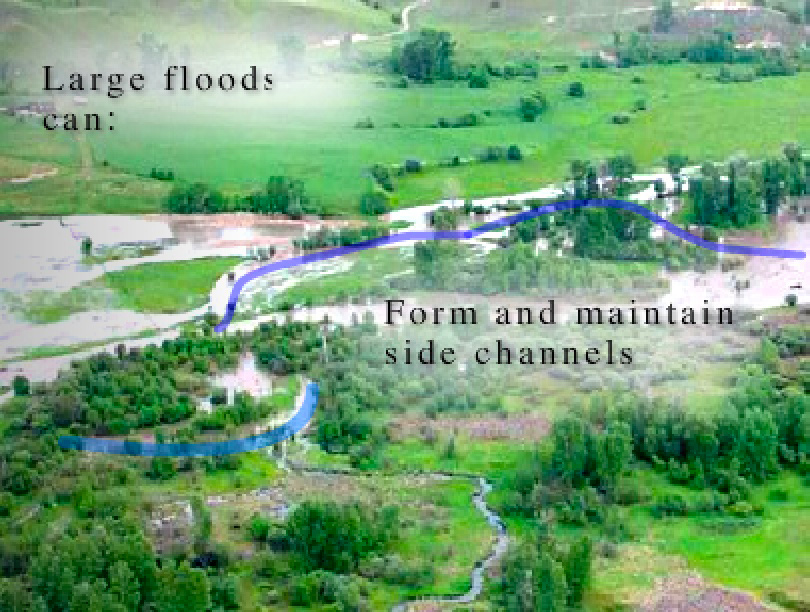
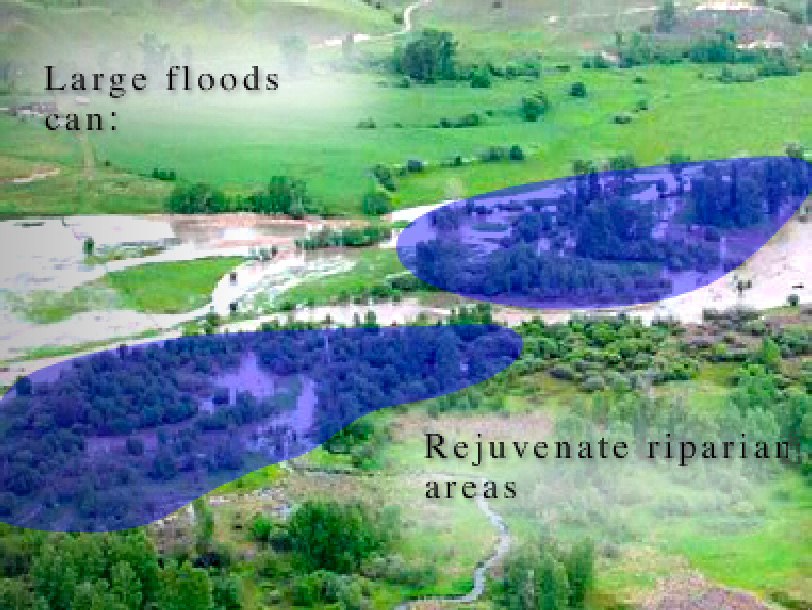
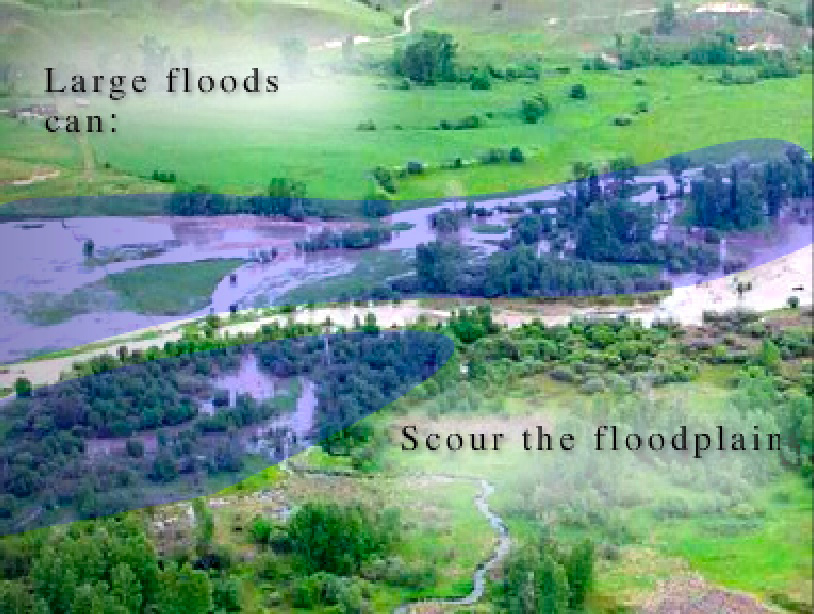
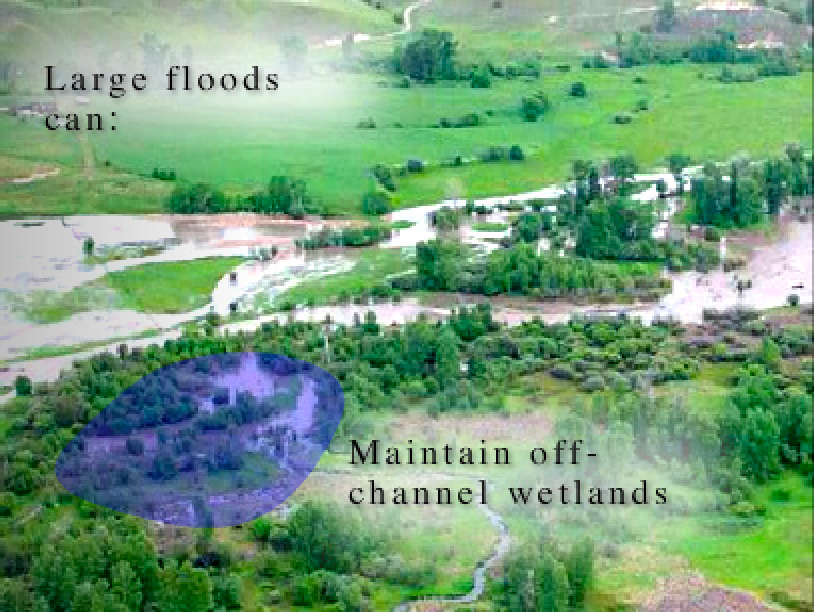
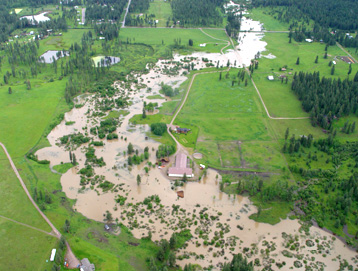
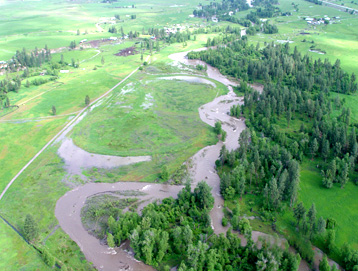
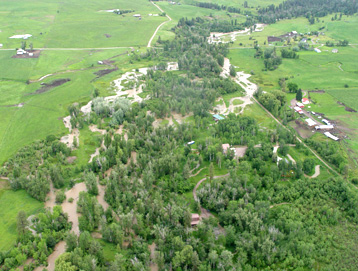
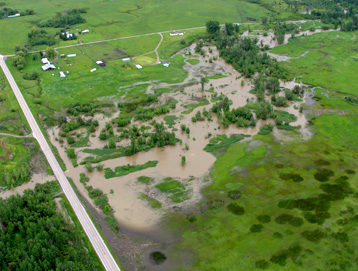

Hydrology: Attributes of a Healthy Stream
An alluvial stream is one whose channel is composed of the sediments transported by the stream itself and that generally changes the shape of its bed as the rate of flow changes. (Adapted from Attributes of an alluvial river and their relation to water policy and management by Trash, McBain, and Leopold).
Attribute Seven: Large Floods Create a Complex Stream Environment
Large floods—those that occur at intervals of greater than 10 or 20 years—reshape and/or redirect meanders, move the main-stem channel, rejuvenate riparian stands, form and maintain side channels, scour floodplains, and maintain off-channel wetlands.
Floodplains are wetted almost every spring, but once every 10 to 20 years or so on average, flows are great enough to scour the floodplain. These infrequent large floods are critical for sustaining the complexity of the channel because they change the location and shape of the river on a large scale.
